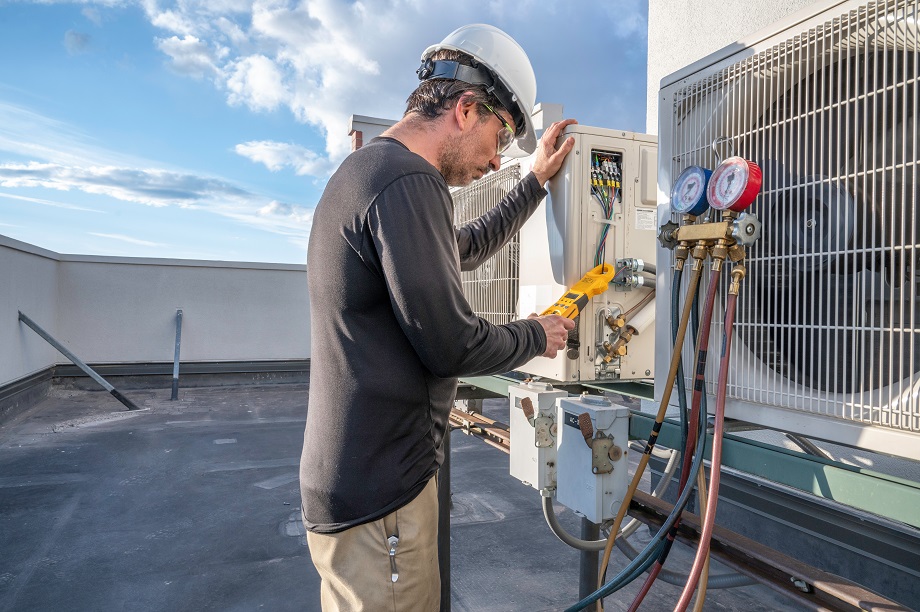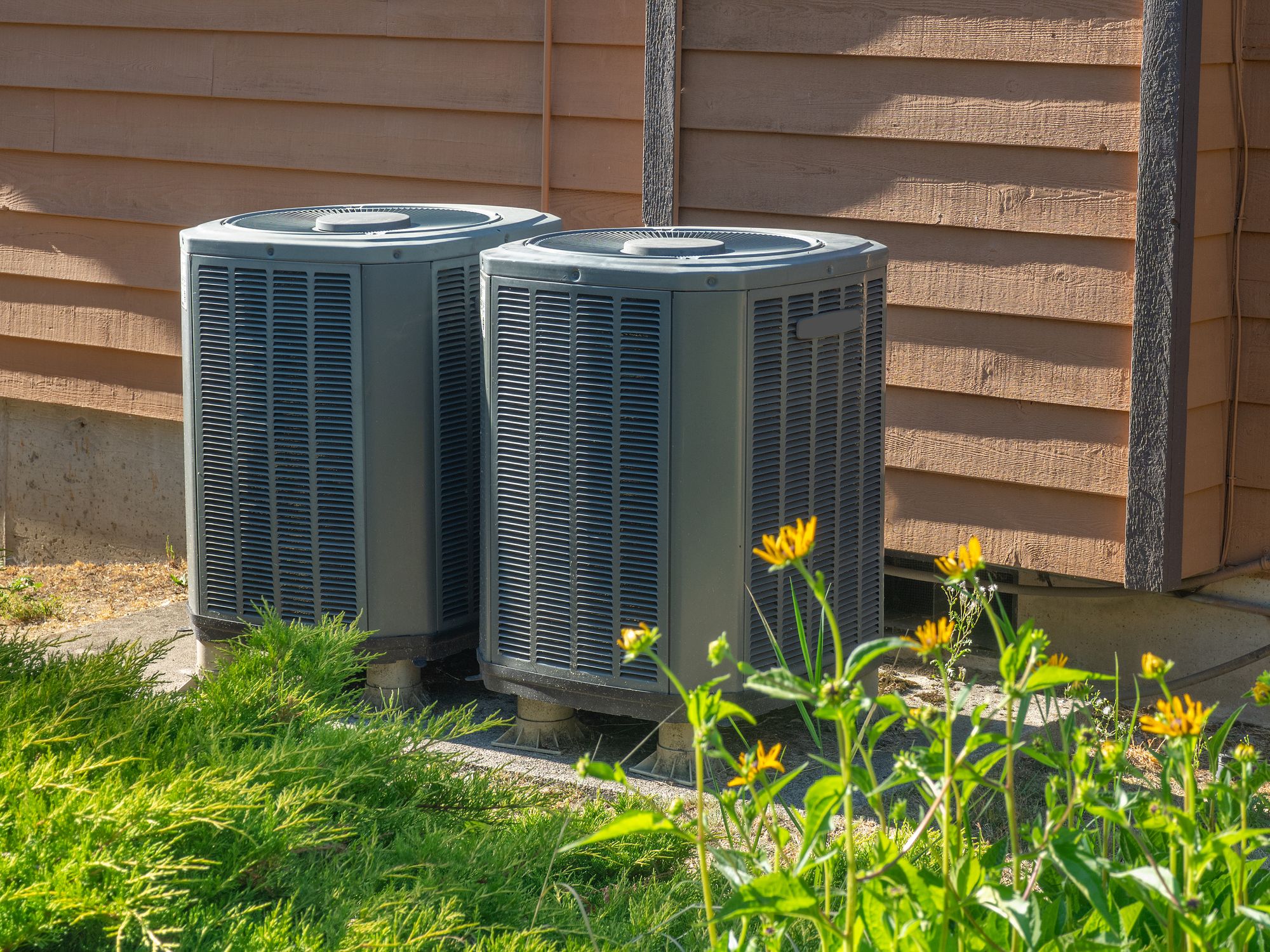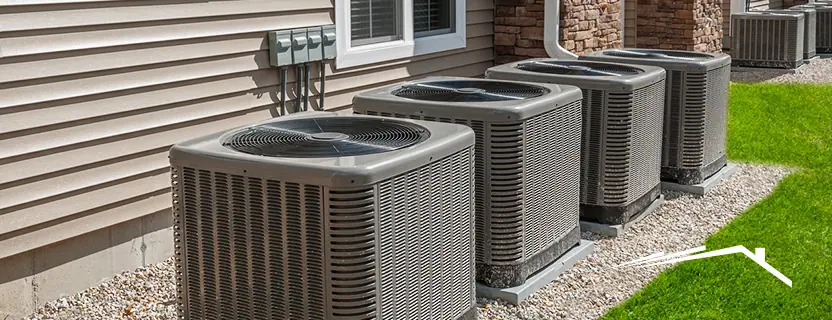Discovering the Crucial Parts of an Efficient HVAC System
An efficient heating and cooling system is developed on a number of critical components that operate in consistency. Each part, from the thermostat to the ductwork, plays an essential role in preserving convenience and power efficiency. Recognizing these elements is critical for maximizing efficiency and improving interior air quality. As one checks out these parts, the complex relationships between them expose understandings into improving general system efficiency. What particular factors contribute most to this efficiency?
The Function of the Thermostat in A/c Performance

Frequently neglected, the thermostat plays an essential role in the effectiveness of HVAC systems. This little device functions as the main nerve center, managing temperature level settings and guaranteeing excellent convenience within an area. By precisely sensing the ambient temperature level, the thermostat communicates with the air, air flow, and heating conditioning devices to keep the preferred climate
An effective thermostat lessens energy consumption by activating the HVAC system only when necessary, thereby protecting against excessive heating or air conditioning. Modern programmable and clever thermostats enhance this effectiveness additionally by allowing users to establish routines and from another location adjust settings, adapting to everyday routines.
The positioning of the thermostat is necessary; incorrect location can lead to unreliable temperature readings, resulting in ineffective procedure. On the whole, a well-functioning thermostat not only boosts convenience but also contributes considerably to energy savings and the long life of the heating and cooling system.
Understanding the Significance of Air Filters
Air filters offer an essential function in cooling and heating systems by ensuring that the air flowing within an area continues to be healthy and clean. These filters trap dust, allergens, and other contaminants, stopping them from being recirculated throughout the setting. By catching these fragments, air filters add to improved interior air high quality, which can considerably profit owners' health and wellness, specifically those with allergies or breathing problems.
Furthermore, preserving clean air filters boosts the performance of heating and cooling systems. Clogged up filters can restrict air movement, creating the system to work harder to maintain preferred temperatures, causing enhanced power consumption and greater energy costs. On a regular basis replacing or cleaning filters is an essential upkeep action that can prolong the life expectancy of a/c devices. Ultimately, recognizing the value of air filters allows home owners and building supervisors to take aggressive procedures to assure a well-functioning, reliable cooling and heating system that advertises a safe and comfortable indoor environment.

The Performance of the Heating System and Heatpump
Furnaces and heatpump are crucial parts of HVAC systems, in charge of offering heat throughout colder months. Heaters operate by home heating air through combustion or electric resistance, then distributing it throughout the home using ducts. They generally use rapid heating and can be fueled by gas, electrical power, or oil, relying on the system kind.
Alternatively, heatpump move warm instead of create it. They draw out heat from the outside air or ground, even in reduced temperatures, and move it inside your home. HVAC experts. This double functionality enables warmth pumps to also offer cooling in warmer months, making them flexible options for year-round environment control
Both systems call for proper upkeep to assure efficiency and durability. While heaters stand out in severe cool, warmth pumps can be beneficial in modest environments. Recognizing their unique functionalities aids home owners in choosing one of the most suitable alternative for their heating requires.
Exploring the A/c System
The a/c system is an essential element of a/c systems, readily available in numerous kinds to suit different requirements. Understanding the effectiveness ratings of these devices is important for making informed options about power usage and cost. This section will certainly check out the varied types of air conditioning unit and clear up how effectiveness scores effect efficiency.
Kinds of Air Conditioners
While different elements affect the selection of a/c systems, recognizing the different kinds readily available is crucial for home owners and building supervisors alike. Central air conditioning conditioners are created to cool down entire homes or structures, making use of a network of ducts for air flow. Window units supply an even more local remedy, perfect for solitary spaces or small areas. Mobile air conditioners provide versatility, allowing customers to relocate the unit as needed. Ductless mini-split systems are an additional choice, incorporating the performance of central systems with the benefit of zoning, as they need no ductwork. Geothermal systems harness the planet's temperature for energy-efficient air conditioning. Each type comes with unique advantages, making informed options important for effective environment control.

Effectiveness Rankings Explained
Comprehending efficiency ratings is necessary for choosing the right air conditioning device, as these metrics provide understanding into the system's efficiency and energy consumption. One of the most usual score for a/c unit is the Seasonal Power Effectiveness Proportion (SEER), which gauges the cooling outcome during a common air conditioning season split by the total electrical energy input. A higher SEER suggests far better efficiency. Furthermore, the Power Efficiency Ratio (EER) is used for gauging performance under details problems. Another essential metric is the Energy Celebrity qualification, which symbolizes that a system fulfills stringent power effectiveness guidelines. By assessing these ratings, consumers can make enlightened options that not just maximize comfort yet additionally decrease energy costs and environmental effect.
The Significance of Ductwork and Air flow
Reliable ductwork style and air movement monitoring play critical functions in the total effectiveness and efficiency of cooling and heating systems. Correct ductwork assurances that conditioned air is dispersed evenly throughout a space, minimizing temperature changes and boosting convenience. Properly designed air ducts reduce resistance to air flow, decreasing the workload on a/c devices and eventually decreasing energy intake.
Air flow management involves strategically putting vents and signs up to enhance the circulation of air. This prevents typical concerns such as hot or cold places, which can happen when air flow is blocked or improperly balanced. Furthermore, the appropriate duct materials and insulation can further enhance performance by decreasing warmth loss or gain throughout air transit.
An effective ductwork system not only adds to power financial savings however can likewise extend the lifespan of heating and cooling equipment by reducing unneeded stress (HVAC experts). As a result, understanding the value of ductwork and air flow is important for achieving peak cooling and heating system performance
Routine Upkeep Practices to Improve Efficiency
Regular maintenance methods are necessary for making sure peak efficiency of cooling and heating systems. These methods consist of regular evaluations, cleansing, and needed fixings to maintain the system running efficiently. Routinely transforming air filters is essential, as stopped up filters can obstruct air flow and lower efficiency. In addition, service technicians must examine and tidy evaporator and condenser coils to avoid getting too hot and energy wastage.
Annual expert evaluations are likewise advised, as trained service technicians can identify possible problems prior to they rise. Lubricating moving parts decreases wear and tear, contributing to a much longer lifespan for the system. In addition, ensuring that the thermostat works properly help in keeping suitable temperature level control.

Often Asked Concerns
Exactly how Usually Should I Change My Thermostat?
Thermostats ought to normally be changed every 5 to one decade, depending on usage and modern technology advancements. Regular checks are a good idea to assure peak performance, particularly if experiencing inconsistent temperature control or boosted power expenses.
What Dimension Air Filter Is Finest for My HVAC System?
The finest size air filter for a HVAC system differs by system style. Typically, it's important to get in touch with the owner's handbook or inspect the existing filter read more dimensions to ensure peak performance and air high quality.
Can I Install a Heatpump Myself?
Mounting a warm pump separately is possible for experienced people, yet it calls for expertise of electric systems and regional codes. Employing a specialist is suggested to guarantee correct installment and suitable system performance.
Just how Do I Know if My Ductwork Is Efficient?
To determine ductwork performance, one should look for leakages, action airflow at vents, evaluate insulation quality, and examine temperature differences in between supply and return ducts. Expert evaluations can offer complete insights into total efficiency.
What Are Indicators My Cooling And Heating Requirements Immediate Upkeep?
Indications that a heating and cooling system needs immediate upkeep consist of uncommon sounds, irregular temperatures, increased energy bills, unpleasant smells, and regular biking. Dealing with these problems quickly can prevent additional damage and warranty optimal system performance.
Air filters offer a necessary function in Cooling and heating systems by assuring that the air circulating within an area remains tidy and healthy and balanced. Additionally, preserving clean air filters improves the efficiency of Heating and cooling systems. Ductless mini-split systems are one more option, combining the effectiveness of main systems with the benefit of zoning, as they require no ductwork. Recognizing efficiency scores is important for picking the ideal air conditioning device, as these metrics offer insight right into the system's efficiency and energy intake. The ideal dimension air filter for a Heating and cooling system varies by system layout.